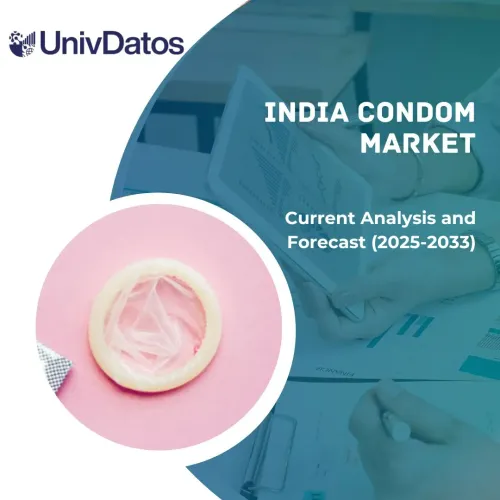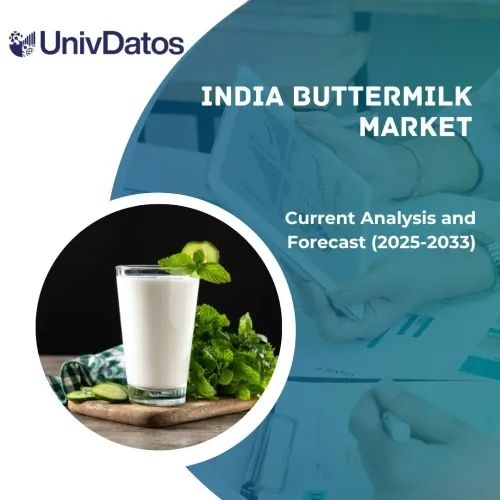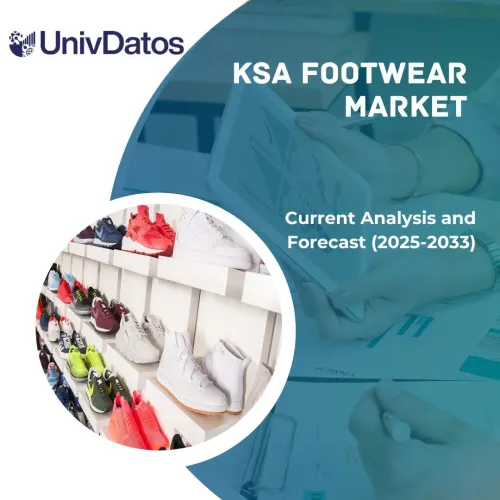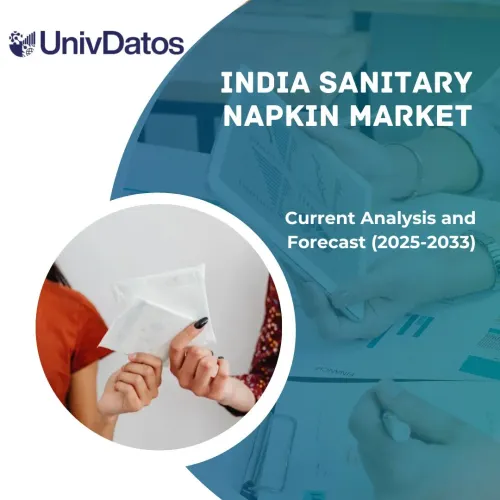- الرئيسية
- معلومات عنا
- صناعة
- الخدمات
- قراءة
- اتصل بنا
سوق الروبوتات الغذائية: التحليل والتوقعات الحالية (2021-2027)
: التركيز على النوع (مفصلي، ديكارتي، سكارا، متوازي، أسطواني، تعاوني، أخرى)؛ الحمولة (منخفضة، متوسطة، عالية)؛ نوع الوظيفة (التعبئة على منصات، التغليف، إعادة التغليف، الالتقاط والوضع، المعالجة، أخرى)؛ التطبيق (اللحوم والدواجن والمأكولات البحرية، الأطعمة المصنعة، منتجات الألبان، الفواكه والخضروات، المشروبات، المخابز والحلويات، أخرى)؛ المنطقة/البلد
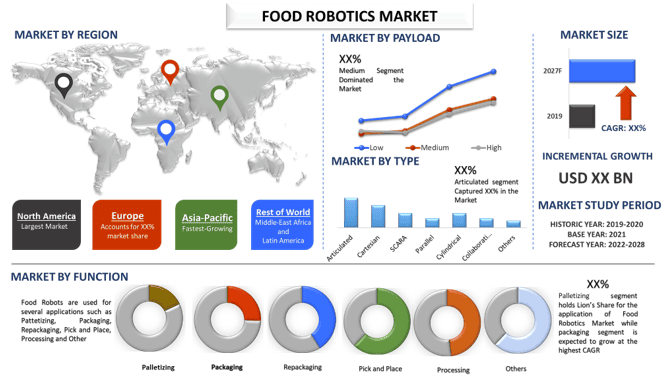
الروبوتات الغذائية العالمية تمتلك السوق قيمة 2.1 مليار دولار أمريكي في عام 2020 ومن المتوقع أن تصل إلى 4.9 مليار دولار أمريكي بحلول عام 2027، مما يعرض معدل نمو سنوي مركب مرتفعًا بنسبة 13٪ خلال الفترة المتوقعة (2021-2027).تشهد الروبوتات الغذائية زيادة في الطلب بسبب انخفاض إنتاجية اليد العاملة وساعات عمل العمال وإجمالي الإنتاج أيضًا. يساعد نشر الروبوتات في زيادة الإنتاج وتوفير الوقت والتشغيل السلس والفعال أيضًا. وفقًا لمكتب إحصاءات العمل الأمريكي، يعمل حوالي 1.6 مليون عامل في تصنيع الأغذية. علاوة على ذلك، مع تزايد الحوادث أثناء معالجة الأغذية والعمليات الأخرى، هناك طلب أكبر على روبوتات الأغذية. في عام 2018، كان معدل الحوادث لعمال تصنيع الأغذية في الولايات المتحدة 4.2٪. من بينها، تعد الحروق والجروح والانزلاقات من بين الأنواع الأكثر شيوعًا للإصابات في مصانع معالجة الأغذية.
وفقًا لوزارة الزراعة الأمريكية (USDA)، مثلت مصانع تصنيع الأغذية والمشروبات 15.8٪ من قيمة الشحنات و 14.7٪ من جميع العاملين من جميع مصانع التصنيع الأمريكية في عام 2019. إن الطلب المتزايد على الأطعمة المصنعة والمعبأة في المنطقة يعمل كمحفز للنمو في هذه الصناعة. يأتي 80٪ من إجمالي استهلاك السعرات الحرارية للأمريكيين من الأطعمة والمشروبات المشتراة من المتاجر (معبأة وغير معبأة). علاوة على ذلك، فإن الزيادة في الوفيات المرتبطة بالعمل في المنطقة تؤدي أيضًا إلى انتشار نمو الطلب. وفقًا لمكتب إحصاءات العمل الأمريكي، زاد عدد الوفيات من 40 في عام 2016 إلى 49 في عام 2019.
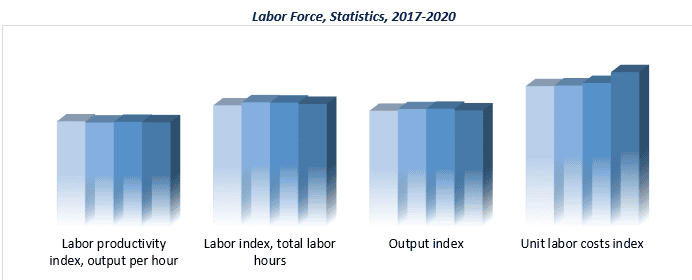
ABB Group، Kawasaki Heavy Industries Ltd.، Rockwell Automation Incorporated، Mitsubishi Electric Corporation، Fanuc Corporation، Yaskawa Electric Corporation، Kuka AG، Seiko Epson Corporation، Staubli International AG، و Universal Robotics A/S. إلخ، هم بعض اللاعبين البارزين العاملين في سوق الروبوتات الغذائية. وقد تم اتخاذ العديد من عمليات الاندماج والاستحواذ جنبًا إلى جنب مع الشراكات من قبل هؤلاء اللاعبين لتزويد العملاء بمنتجات عالية التقنية ومبتكرة.
الرؤى المقدمة في التقرير
“من بين الأنواع، يمتلك الجزء المفصلي الحصة الأكبر”
بناءً على النوع، يتم تقسيم السوق إلى مفصلي، وديكارتي، وسكارا، ومتوازي، وأسطواني، وتعاوني، وغيرها. استحوذ الجزء المفصلي من سوق الروبوتات الغذائية العالمية على حصة السوق الرئيسية وهيمنت على السوق. استحوذ الجزء على حوالي XX% من حصة السوق وحقق USD XX Mn في عام 2020 ومن المتوقع أن ينمو بمعدل نمو سنوي مركب قدره XX% خلال السنوات القادمة
“من بين الحمولة، من المتوقع أن يسيطر الجزء ذو الحمولة المتوسطة على السوق خلال الفترة المتوقعة”
بناءً على الحمولة، يتم تقسيم السوق بشكل أساسي إلى منخفضة ومتوسطة وعالية. استحوذ الجزء ذو الحمولة المتوسطة على حصة السوق الرئيسية واستحوذ على XX% من إيرادات السوق في عام 2020. ومع ذلك، سيظهر الجزء ذو الحمولة المنخفضة في الفترة المتوقعة وسيشهد أعلى معدل نمو سنوي مركب خلال الفترة القادمة
“من بين نوع الوظيفة، استحوذ جزء التعبئة على منصات على حصة السوق الرئيسية في عام 2020”
بناءً على نوع الوظيفة، يتم تقسيم السوق إلى التعبئة على منصات، والتغليف، وإعادة التغليف، والالتقاط والوضع، والمعالجة، وغيرها. استحوذ جزء التعبئة على منصات على حصة السوق الرئيسية واستحوذ على XX% من إيرادات السوق في عام 2020. ومع ذلك، سيظهر جزء التغليف في الفترة المتوقعة وسيشهد أعلى معدل نمو سنوي مركب خلال الفترة القادمة أيضًا وسيصل إلى USD XX Mn بحلول عام 2027
“من بين التطبيقات، استحوذ قطاع اللحوم والدواجن والمأكولات البحرية على حصة السوق الرئيسية في عام 2020”
بناءً على التطبيق، يتم تقسيم السوق إلى اللحوم والدواجن والمأكولات البحرية، والأطعمة المصنعة، ومنتجات الألبان، والفواكه والخضروات، والمشروبات، ومنتجات المخابز والحلويات، والتطبيقات الأخرى (الأطعمة الجاهزة وأغذية الرضع). استحوذ قطاع اللحوم والدواجن والمأكولات البحرية على XX% من حصة السوق وحقق USD XX Mn في عام 2027. علاوة على ذلك، من المتوقع أن يصل هذا القطاع إلى USD XX Mn بحلول عام 2027 بنمو قدره XX% معدل نمو سنوي مركب خلال الفترة 2021-2027
“تمثل أمريكا الشمالية واحدة من أكبر أسواق سوق الروبوتات الغذائية”
لفهم أفضل لديناميكيات سوق الروبوتات الغذائية، تم إجراء تحليل مفصل لمناطق مختلفة حول العالم بما في ذلك أمريكا الشمالية وأوروبا وآسيا والمحيط الهادئ وبقية العالم. هيمنت أمريكا الشمالية على السوق وحققت إيرادات قدرها US$ XX مليون في عام 2020 بسبب التغير في نمط الحياة والطلب المتزايد على الأطعمة المصنعة والمعبأة.
أسباب شراء هذا التقرير:
- تتضمن الدراسة تحديد حجم السوق وتحليل التنبؤات الذي تم التحقق منه من قبل خبراء الصناعة الرئيسيين المعتمدين
- يقدم التقرير مراجعة سريعة للأداء العام للصناعة في لمحة واحدة
- يغطي التقرير تحليلاً متعمقًا لنظرائه البارزين في الصناعة مع التركيز الأساسي على البيانات المالية التجارية الرئيسية ومحفظة المنتجات واستراتيجيات التوسع والتطورات الأخيرة
- فحص مفصل للدوافع والقيود والاتجاهات الرئيسية والفرص السائدة في الصناعة
- تغطي الدراسة السوق بشكل شامل عبر قطاعات مختلفة
- تحليل متعمق على المستوى الإقليمي للصناعة
خيارات التخصيص:
يمكن تخصيص سوق الروبوتات الغذائية كذلك حسب المتطلبات أو أي قطاع سوق آخر. إلى جانب ذلك، تدرك UMI أن لديك احتياجات عمل خاصة بك، ومن ثم لا تتردد في التواصل معنا للحصول على تقرير يناسب متطلباتك تمامًا.
جدول المحتويات
منهجية البحث لتحليل سوق الروبوتات الغذائية العالمية (2021-2027)
كان تحليل السوق التاريخية وتقدير السوق الحالية والتنبؤ بالسوق المستقبلية لسوق الروبوتات الغذائية هي الخطوات الرئيسية الثلاث التي تم اتخاذها لإنشاء وتحليل الطلب على الروبوتات الغذائية عبر المناطق الرئيسية. تم إجراء بحث ثانوي شامل لجمع أرقام السوق التاريخية وتقدير حجم السوق الحالي. ثانيًا، للتحقق من صحة هذه الرؤى، تم أخذ العديد من النتائج والافتراضات في الاعتبار. علاوة على ذلك، أجريت أيضًا مقابلات أولية شاملة مع خبراء الصناعة عبر سلسلة قيمة سوق الروبوتات الغذائية. بعد افتراض رقم السوق والتحقق من صحته من خلال المقابلات الأولية، استخدمنا نهجًا من أعلى إلى أسفل/من أسفل إلى أعلى للتنبؤ بحجم السوق الكامل. بعد ذلك، تم اعتماد أساليب تفصيل السوق وتثليث البيانات لتقدير وتحليل حجم السوق للقطاعات والقطاعات الفرعية التي تنتمي إليها الصناعة. يتم شرح المنهجية التفصيلية أدناه:
تحليل حجم السوق التاريخي
الخطوة 1: دراسة متعمقة للمصادر الثانوية:
أجريت دراسة ثانوية مفصلة للحصول على حجم السوق التاريخي للروبوتات الغذائية من خلال مصادر داخلية للشركة مثلالتقارير السنوية والبيانات المالية وعروض الأداء والبيانات الصحفية وما إلى ذلك،ومصادر خارجية بما في ذلكالمجلات والأخبار والمقالات والمنشورات الحكومية ومنشورات المنافسين وتقارير القطاع وقاعدة بيانات الطرف الثالث والمنشورات الموثوقة الأخرى.
الخطوة 2: تقسيم السوق:
بعد الحصول على حجم السوق التاريخي لسوق الروبوتات الغذائية، أجرينا تحليلًا ثانويًا تفصيليًا لجمع رؤى السوق التاريخية والحصة لأنواع الحمولة والوظيفة والتطبيقات للمناطق الرئيسية. تشمل القطاعات الرئيسية المضمنة في التقرير نوع المادة والتطبيق والمنتج. علاوة على ذلك، أجريت تحليلات على مستوى المنطقة والبلد لتقييم الاعتماد العام للروبوتات الغذائية في جميع أنحاء العالم.
الخطوة 3: تحليل العوامل:
بعد الحصول على حجم السوق التاريخي للقطاعات والقطاعات الفرعية المختلفة، أجرينا تفصيلاًتحليل العوامللتقدير حجم السوق الحالي للروبوتات الغذائية. علاوة على ذلك، أجرينا تحليل العوامل باستخدام متغيرات تابعة ومستقلة مثل الطلب المتزايد على الأطعمة المصنعة والمعبأة، والزيادة في الدخل المتاح، وما إلى ذلك، تم إجراء تحليل شامل لسيناريوهات الطلب والعرض مع الأخذ في الاعتبار أفضل الشراكات وعمليات الاندماج والاستحواذ والتوسع في الأعمال وإطلاق المنتجات في صناعة الروبوتات الغذائية في جميع أنحاء العالم.
تقدير وتوقعات حجم السوق الحالي
تحديد حجم السوق الحالي:بناءً على رؤى قابلة للتنفيذ من الخطوات الثلاث المذكورة أعلاه، توصلنا إلى حجم السوق الحالي، والجهات الفاعلة الرئيسية في سوق الروبوتات الغذائية، وحصص السوق للقطاعات. تم تحديد جميع نسب الحصص المنقسمة المطلوبة وتفاصيل السوق باستخدام النهج الثانوي المذكور أعلاه وتم التحقق منها من خلال المقابلات الأولية.
التقدير والتنبؤ:لتقدير السوق والتنبؤ به، تم تخصيص ترجيح لعوامل مختلفة بما في ذلك المحركات والاتجاهات والقيود والفرص المتاحة لأصحاب المصلحة. بعد تحليل هذه العوامل، تم تطبيق تقنيات التنبؤ ذات الصلة، أي نهج من أسفل إلى أعلى/من أعلى إلى أسفل للوصول إلى توقعات السوق حول عام 2027 للقطاعات والقطاعات الفرعية المختلفة عبر الأسواق الرئيسية على مستوى العالم. تشتمل منهجية البحث المعتمدة لتقدير حجم السوق على:
- حجم السوق في الصناعة، من حيث القيمة (بالدولار الأمريكي) ومعدل اعتماد الروبوتات الغذائية عبر الأسواق الرئيسية محليًا
- جميع نسب الحصص المنقسمة وتفاصيل قطاعات السوق والقطاعات الفرعية
- اللاعبين الرئيسيين في سوق الروبوتات الغذائية من حيث الخدمات المقدمة. أيضًا، استراتيجيات النمو التي اعتمدها هؤلاء اللاعبون للتنافس في السوق سريعة النمو
التحقق من حجم السوق وحصته
البحث الأساسي:أُجريت مقابلات متعمقة مع قادة الرأي الرئيسيين (KOLs) بما في ذلك كبار المسؤولين التنفيذيين (CXO/VPs، ورؤساء المبيعات، ورؤساء التسويق، ورؤساء العمليات، ورؤساء المناطق، ورؤساء الدول، وما إلى ذلك) عبر المناطق الرئيسية. ثم تم تلخيص نتائج البحث الأساسي، وأُجري تحليل إحصائي لإثبات الفرضية المذكورة. جرى دمج مدخلات البحث الأساسي مع النتائج الثانوية، وبالتالي تحويل المعلومات إلى رؤى قابلة للتنفيذ.
تقسيم المشاركين الأساسيين في مناطق مختلفة
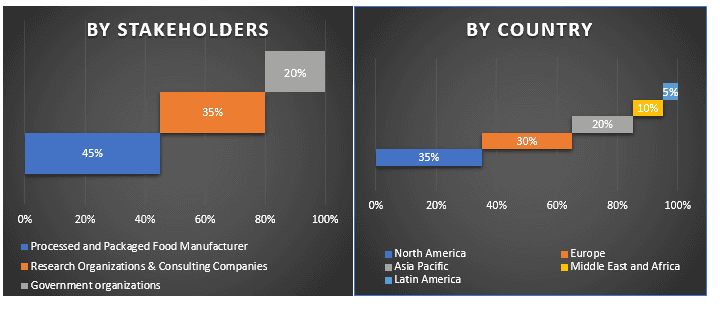
هندسة السوق
استُخدمت تقنية تثليث البيانات لإكمال التقدير العام للسوق والتوصل إلى أرقام إحصائية دقيقة لكل شريحة وشريحة فرعية من سوق الروبوتات الغذائية. قُسمت البيانات إلى عدة شرائح وشرائح فرعية بعد دراسة معايير واتجاهات مختلفة في مجالات النوع، والحمولة، والوظيفة، والتطبيق، لسوق الروبوتات الغذائية.
الهدف الرئيسي من دراسة سوق الروبوتات الغذائية
تم تحديد اتجاهات السوق الحالية والمستقبلية للروبوتات الغذائية في الدراسة. يمكن للمستثمرين اكتساب رؤى استراتيجية لتأسيس تقديرهم للاستثمارات من التحليل النوعي والكمي الذي أُجري في الدراسة. تم تحديد اتجاهات السوق الحالية والمستقبلية لجاذبية السوق الإجمالية على المستوى الإقليمي، مما يوفر منصة للمشارك الصناعي لاستغلال السوق غير المستغلة للاستفادة كميزة المحرك الأول. تشمل الأهداف الكمية الأخرى للدراسات:
- تحليل حجم السوق الحالي والمتوقع للروبوتات الغذائية من حيث القيمة (بالدولار الأمريكي). أيضًا، تحليل حجم السوق الحالي والمتوقع للشرائح والشرائح الفرعية المختلفة
- تشمل الشرائح في الدراسة مجالات النوع والحمولة والوظيفة والتطبيق
- تحديد وتحليل الإطار التنظيمي لصناعة الروبوتات الغذائية
- تحليل سلسلة القيمة المتضمنة مع وجود وسطاء مختلفين، إلى جانب تحليل سلوكيات العملاء والمنافسين في الصناعة
- تحليل حجم السوق الحالي والمتوقع لسوق الروبوتات الغذائية للدول الرئيسية
- تشمل المنطقة الرئيسية التي تمت دراستها في التقرير أمريكا الشمالية وأوروبا وآسيا والمحيط الهادئ وبقية العالم.
- ملفات تعريف الشركات في سوق الروبوتات الغذائية واستراتيجيات النمو التي اعتمدها اللاعبون في السوق للحفاظ على الاستمرارية في السوق سريعة النمو
تحليل متعمق على المستوى الإقليمي للصناعة
ذات صلة التقارير
العملاء الذين اشتروا هذا المنتج اشتروا أيضًا

